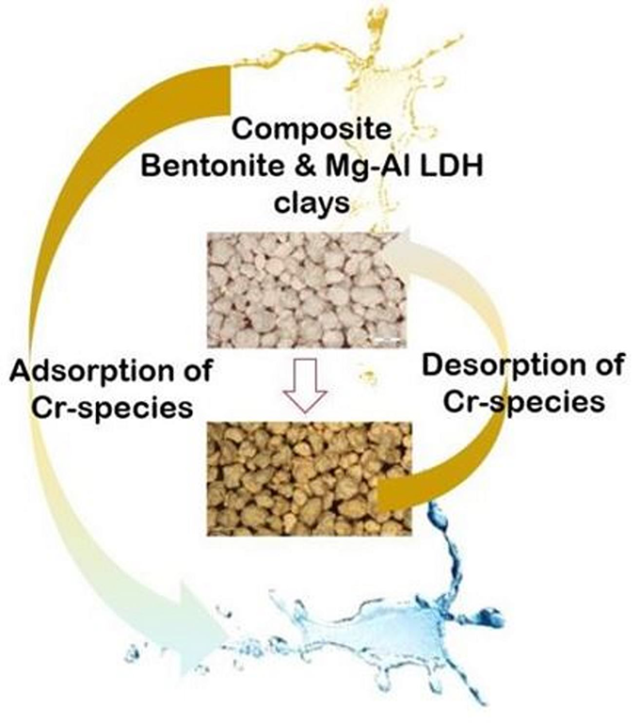Since the start of Pavitra Ganga, VITO and IIT Kanpur (IITK) are working on the optimization of the design of the structured sorbents for the removal of chromium (Cr) from the effluents of the Jajmau municipal wastewater treatment plant in Kanpur. VITO hosts each year Msc students from the University of Antwerp working on different topics such as these. This collaboration has now resulted in an open access scientific article in Molecules, an international open access journal from MDPI.
The study focuses on chromium removal through adsorption and ion exchange using structured calcined layered double hydroxide (LDH) magnesium-aluminium bentonite composites. The powders were structured into granulates to study the effect on Cr sorption kinetics to circumvent the limitations of working with powders in real-life applications. After that the regeneration of the structured composites was optimized to enable multi-cycling operation, which is the key for their applicability beyond laboratory scale.
Ratio for optimal Chromium removal and recovery
The LDH/bentonite ratio was optimized to obtain the best performance for the adsorption or removal of Cr3+and Cr6+species. In powder form, the calcined adsorbent containing 80% LDH and 20% bentonite performed best with an adsorption capacity of 48 and 40 mg/g for Cr3+and Cr6+, respectively.
The recovery or desorption of Chromium was further optimized by studying the effect of the NaCl concentrations and pH, with a 2 M NaCl solution without pH modification being the optimal setup.
Kinetic data
The kinetic data of the adsorption and desorption steps were modelled, revealing a pseudo-second order model for both. This was also demonstrated using XRD and Raman measurements after the Cr3+and Cr6+adsorption tests, indicating successful uptake and revealing the adsorption mechanism.
Nearly 100% sorption
Finally, five consecutive adsorption–desorption cycles were performed, each showing nearly 100% adsorption and desorption. This provides us with promising information to upscale the approach using real world wastewater.
Read the entire scientific article here:
https://www.mdpi.com/1420-3049/28/12/4879

